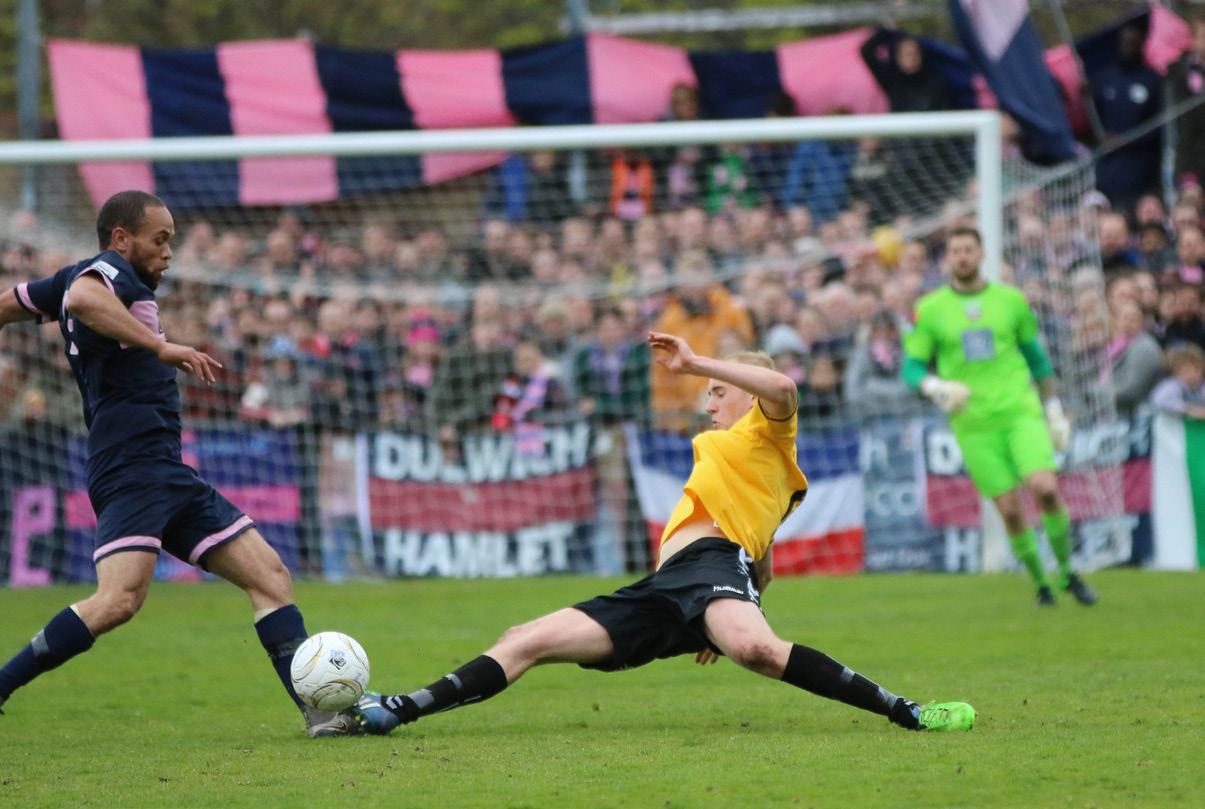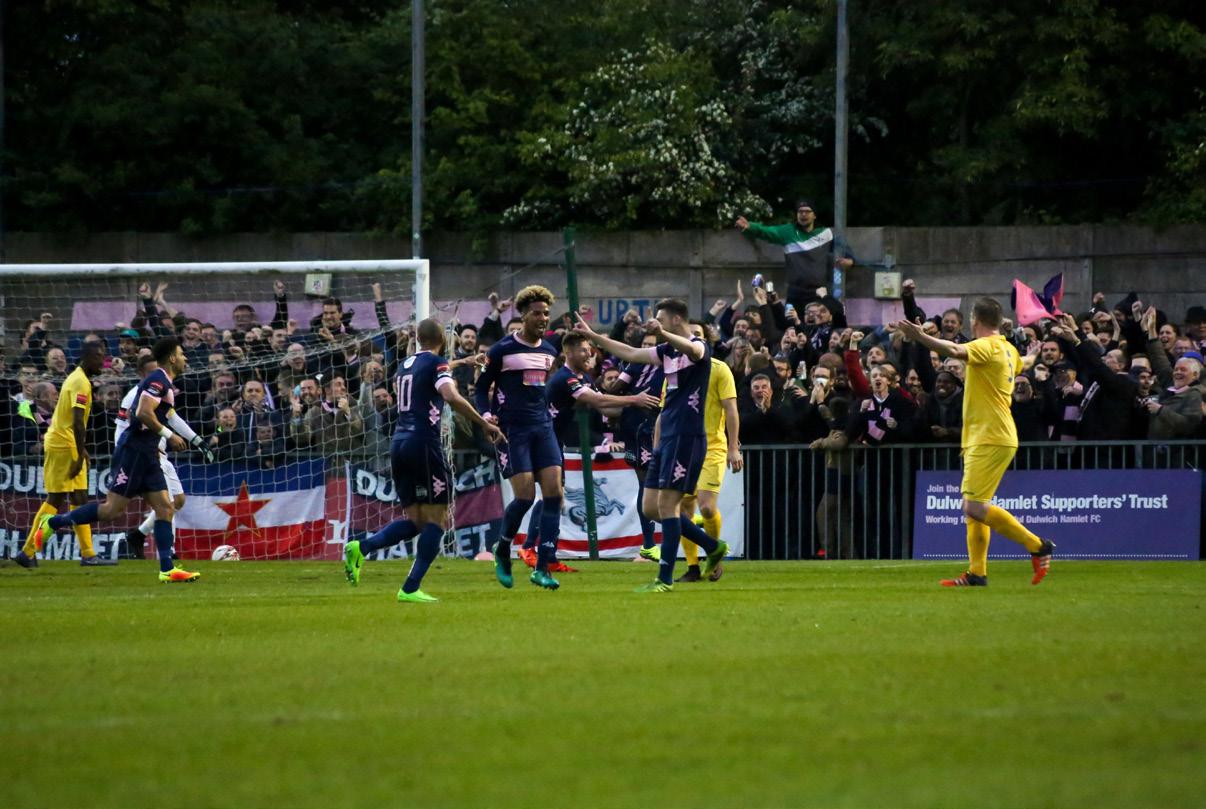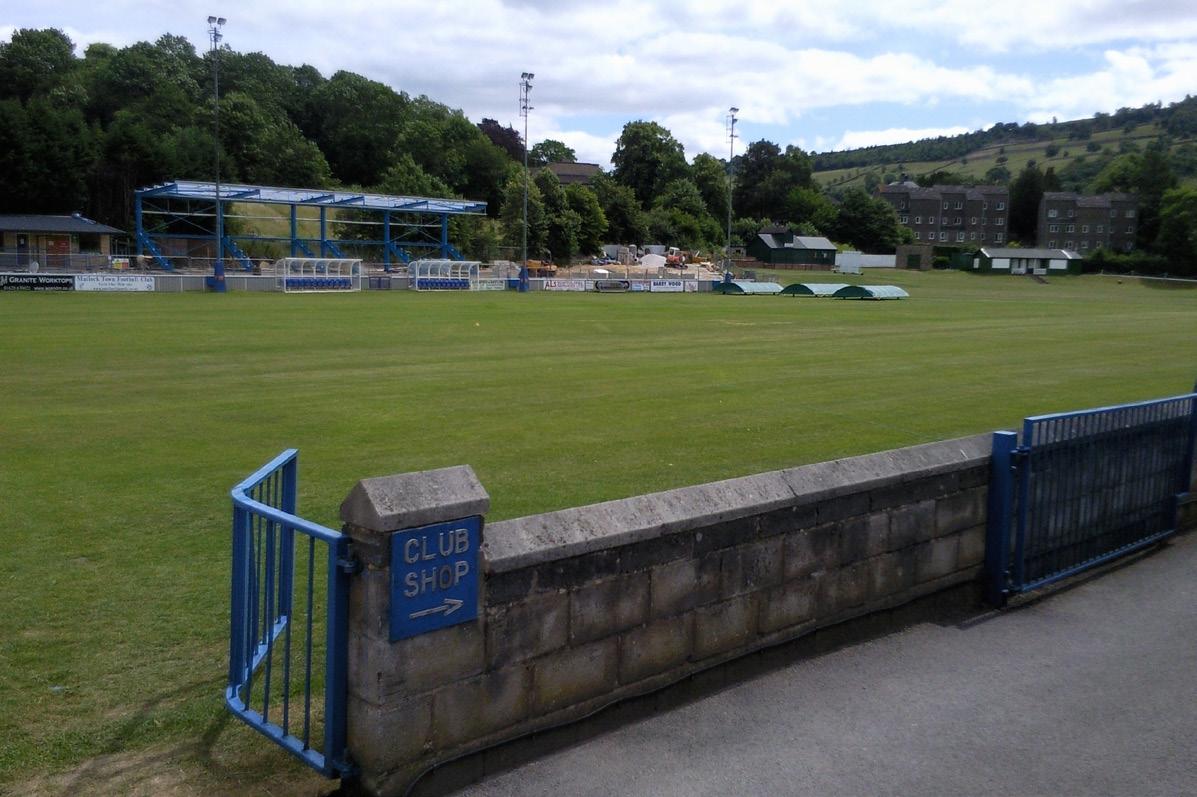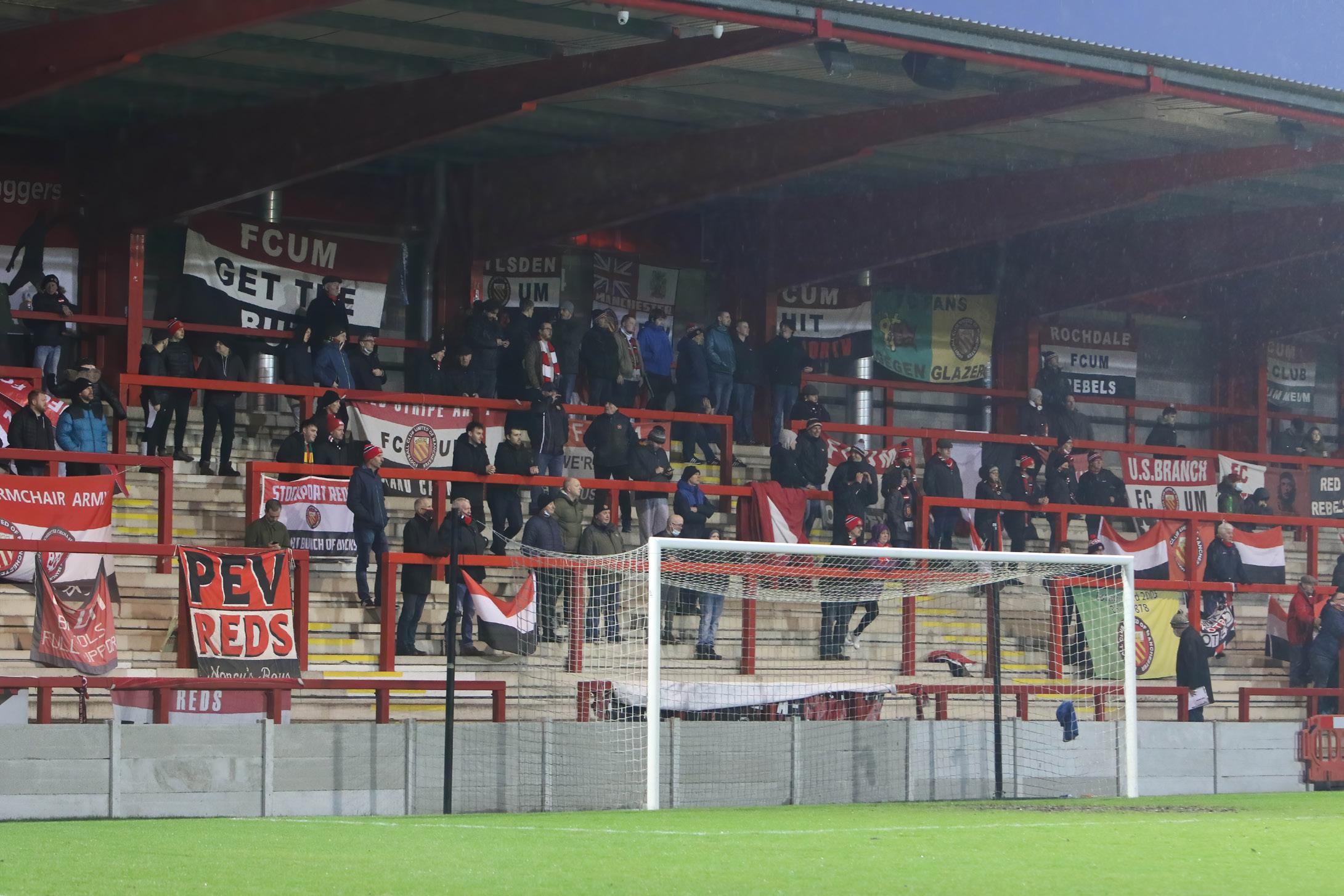
5 minute read
Non-league Culture
from The Leagues Below
by WillRayment
Photo © By James Boyes
DULWICH HAMLET
Advertisement
Wearing pink and blue, Dulwich Hamlet are known as the most hipster club in London. Fans of the vibrant club are known for backing anti-discrimination and anti-homophobia initiatives in their community which has saw their attendances surge in recent years. During the 2015/16 campaign, the Hamlet had the highest average attendance of 1,343 in the seventh tier of English football, this was more than double any other club in the division averaged over the season. The club still have a remarkable ability to pull in big crowds.
Dulwich Hamlet’s vibrant fanbase
MATLOCK TOWN
Matlock is situated at the south eastern edge of the Peak District. Fans that visit their home, Causeway Lane will be surrounded by the scenic hills of the Derbyshire countryside as they watch a game of football.

Photo © By ChrisTheDude (talk) - Own work: Matlock Town FC’s ground, Causeway Lane

PUB PLAYERS?
When people think of non-league football, they think of out-of-shape and uncoordinated players who hoof the ball forward at any chance. Nonleague has produced some of the best players to grace the game and have even developed to turn out for their national side. Jamie Vardy is the most notable and recent example of this success, turning out for Fleetwood Town in the Conference in 2012 to winning the Premier League just four years later. So, it would be ideal to look out for an upcoming superstar at your next non-league game and expect the unexpected.

Photo © By Katie Chan - Own work, CC BY-SA 4.0,
BLYTH SPARTANS
The North East side pride themselves as ‘the most famous non-league football team in the world’. It is most notable for their FA Cup run in 1977-78 where they went onto reach the fifth round where they were beaten by Wrexham in a replay. 42,000 turned out at St James’ park, the home of Newcastle United to roar on the Spartans in the replay.

UNITED AGAINST THE SUPER LEAGUE
Football Clubs have withdrawn from the proposed European Super League in a matter of days after football fans around the world united against the concept.
Six of the Premier League elite, known as the ‘big six’ were invited to join the league. This included, Liverpool, Manchester City, Manchester United, Chelsea, Tottenham Hotspur and Arsenal. They were to be joined by six other clubs from the Spanish and Italian top flights who would have become the 12 founders of the new league.
The founding members were promised a share of a three-billion-euro grant. Real Madrid president, Florentino Perez claimed the league would ‘save football’ due to ‘a lot of poor-quality games’ that have put off young supporters.
Supporters have rallied against owners of the big football teams in England for years due to the ever growing, money driven mentality in the beautiful game.
George Baker, who is former board member of FC United of Manchester said: “None of it surprised me because there’s been murmurings of a European Super League for years.
“What did surprise me was the sheer arrogance of those owners to just assume that everybody would roll over and accept it and continue to pay their money as usual.”
FC United are a fan owned football club who are built on from a breakaway of Manchester United fans on the back of the Glazer family’s takeover in 2005. They feared that a Super League like affair, that would isolate supporters has always been on the cards.
The founder member of the FC United said: “The situation became too much in 2005 so you can imagine an initiative in 2021 where its solely about making money for the owners of those clubs.
“The contempt that they have for their own fan base and the assumption that they will just roll over and accept what has happened.
“In 2005 many threatened to boycott if the Glazers took over and even though FC United were formed there was still very little impact on Manchester United’s attendances.”
The club currently sit in the Northern Premier League, step three of the non-league pyramid which is seven divisions below the Premier League. United are a fan owned club with all profits made going straight back into the club to improve facilities and the playing budget. The football club was created to set an example of how football clubs should be operated.
Baker, who is still on the committee of The Reds said: “FC United was made to a create an image of what we want Manchester United to be like.
“Also, whilst providing a community orientated fan-controlled club for the luxury of the local community and to provide affordable football for said community.
“Clubs like us and any other fan owned club in the nonleague pyramid are doing a far better job in providing what football should be to their fans.”
With no multimillionaire sugar daddy behind the fan owned Manchester club, it has struggled financially throughout its short existence. This has been made even more difficult by the corona virus pandemic, preventing fans coming through the turnstiles, an important source of income for lower league clubs.
The former board member said: “COVID has had a huge impact, we’ve had to set up donations and crowd funders during that time.
“We’re struggling financially at the moment, it cost a lot of money to build our ground.”
Broadhurst Park is the first ground to be built and funded by a supporter-owned football club. The stadium opened in 2015 and has a capacity of 4700, with members of the club involved at every stage of its design and construction. The club once recorded an attendance of 4,158 in a National League North tie against Salford City, who were and still are owned by the millions of the Class of 92.
“The ground has required a lot of initiative such as getting community shares, loan stock investment and loans from the local council.
“All of that of course has to be paid back and were doing it gradually, but we need people through the gate in order to do that.”











